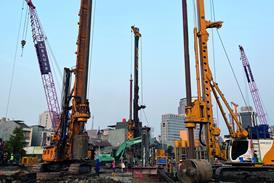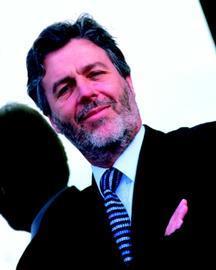Eastwell sees the funny side in a project he worked on such a long time ago only now becoming of use, but it is characteristic, he says, of the way such research takes a long period of time to have an effect on working practices, although many would like it's impact to happen much quicker. "There is a fashion in all research in every industry for its impact to be immediate, but the reality is that its effect is much more incremental. A good example is airtightness. I was involved in projects on that in the 1970s but it's only recently that it has made it into the ÐÇ¿Õ´«Ã½ Regulations. Neither the government nor the industry seem to think long term though. They don't look at the totality of their strategy." Eastwell is mindful of the fact that government support for research is focused on the high end technologies and that support from its members in the building services industry is vital for the area that BSRIA concentrates on.
"BSRIA's role isn't at the front end of innovation, our role is to make innovation the norm, to take the risk element out of it and to maintain and improve the general standards. I think our job is much more about proof of concept and educating people as to the right way to do things."
Part of the right way of doing things is to encourage engineers to view their role in terms of the actual value their work is adding to the client's brief. "As building services engineers we need to have a better understanding of the value of our product to the client. For example, the length of time someone has to stay in a hospital bed, or how a particular design in a school will help to increase the pupils' chances of achieving better results," says Eastwell. "The client doesn't need to know how it works. They just need to know how it will affect their business in these real terms."
Eastwell also agrees with the sentiments of Terry Wyatt that the focus for the industry in the future will be on integrated team working and the energy performance of buildings. "These were the big issues that came out of our Think 2010 event last year," he says. "But the difficulty is the timing of these issues and what the drivers will be that really make them happen. We want to support our members when these things happen and it's in our strategy to be able to do that." Integrated working is an area that Eastwell says BSRIA is heavily involved in, but the issue stretches beyond how it can be achieved within companies and on individual projects, and encompasses the whole of the industry. "I think a big question for construction is how we get to an integrated industry when there are so many actors involved? The existing networks such as the institutions and trade associations and research bodies are extremely powerful, and I don't think we need any more of them. There is a notion that we need to create new networks to address new needs, but I would rather we used the existing ones to the best of our advantage to meet those needs."
Integration is certainly a theme that Eastwell encourages in BSRIA's own workforce, and the open plan design of their new offices has provided a much more integrated atmosphere across the company. "Clients now require a much broader range of services so we wanted a new space where we could combine our skills and have an interactive environment where our staff could mix with each other and with our clients. It comes back to this integrated team working approach. Each area of the team has to work well in order for the other departments to do their jobs well and achieve the best results in the end for the client."
Source
ÐÇ¿Õ´«Ã½ Sustainable Design


















No comments yet